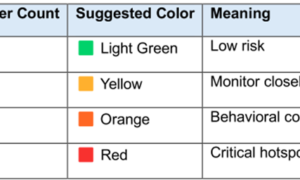Welcome to the future of finance, where digital currencies and Non-Fungible Tokens (NFTs) collide in the virtual realm known as the Metaverse. Step into a world where ownership takes on a whole new meaning, where unique digital assets hold immense value, and where blockchain technology transforms the way we interact with money. In this article, we will unravel the intricate financial landscape of the Metaverse, exploring how virtual currencies and NFTs are reshaping our perception of wealth and opening up exciting opportunities for both creators and investors alike.
Introduction to Virtual Currencies & NFTs
A virtual currency functions as a digital asset that serves as a medium of exchange within a specific virtual economy. Government or financial institution regulations do not oversee virtual currencies, and they lack backing from real-world assets. The virtual currency market determines their value based on supply and demand dynamics.
Digital assets known as non-fungible tokens (NFTs) denote ownership of distinct items in the digital realm. These tokens reside on a blockchain, a decentralized ledger that publicly and chronologically documents all transactions. NFTs have the capacity to represent ownership of various items, ranging from digital artwork to in-game items.
The value of an NFT is based on the rarity and utility of the item it represents.
How do Virtual Currencies work?
Virtual currencies function as digital or virtual tokens, serving as a payment medium. They originate and reside within a blockchain, a decentralized ledger responsible for recording all transactions. Bitcoin, the inaugural and most renowned virtual currency, came into existence in 2009.
People can utilize virtual currencies for online purchases of goods and services, or they can retain them as investments. Some individuals hold the belief that virtual currencies will eventually supplant traditional fiat currencies, like the US dollar or the Euro.
NFTs (non-fungible tokens), a subtype of virtual currency, denote ownership of digital assets, such as artwork, music, or other digital files. NFTs find storage within a blockchain and are subject to buying, selling, or trading, similar to other virtual currencies.
Advantages of Virtual Currencies & NFTs
There are numerous advantages to virtual currencies and NFTs. For one, they provide a way for people to transact without the need for traditional banking infrastructure. This can be helpful in countries where banking services are unreliable or unavailable.
Another advantage is that virtual currencies and NFTs can be used to purchase virtual goods and services within the metaverse. This opens up a whole new economy that is not tied to the real world. Virtual currencies and NFTs offer a high degree of security and privacy. Transactions are pseudonymous and can be conducted without revealing personal information.
Disadvantages of Virtual Currencies & NFTs
There are a few disadvantages to virtual currencies and NFTs that users should be aware of before entering the metaverse. Firstly, virtual currencies are often subject to wild price swings which can result in large losses for investors. Secondly, NFTs can be difficult to trade and may not be compatible with all platforms. There is a risk that virtual currencies and NFTs could be outlawed by governments if they become too popular.
What is the Impact of Virtual Currencies & NFTs on the Financial Landscape?
As the Metaverse grows in popularity, so too do virtual currencies and NFTs.
While traditional fiat currencies still find wide acceptance in the Metaverse, many businesses are starting to embrace virtual currencies too. This transformation is significantly reshaping the financial dynamics of the Metaverse.
People frequently employ virtual currencies to buy items within the Metaverse, encompassing everything from in-game assets to digital artwork. Among these, Non-Fungible Tokens (NFTs), a form of virtual currency, enable the acquisition of exclusive items like land or one-of-a-kind digital artworks.
The use of virtual currencies and NFTs is growing rapidly in the Metaverse. This is causing a shift in the way people think about money. For example, people are now beginning to view digital assets as more than just “funny money” or “play money”. They are beginning to view them as genuine investments that hold the potential to acquire tangible goods and services.
This shift could have a significant impact on the financial landscape of the Metaverse. For example, we could see the rise of new types of businesses that only accept virtual currencies, or an increase in the number of people who invest in digital assets. Only time will tell how this new landscape will develop.
Security and Regulations
When it comes to security and regulations, virtual currencies and NFTs are largely unregulated. This lack of regulation has led to some concerns about the potential for fraud and other financial crimes. However, there are a number of initiatives underway to help address these concerns.
The first is the establishment of self-regulatory organizations (SROs). These are voluntary organizations that develop and enforce rules and standards for their members. The two largest SROs in the virtual currency space are the Virtual Currency Exchange Association (VCEA) and the Japan Virtual Currency Exchange Association (JVCEA).
Another initiative is the development of best practices by industry associations. For example, the Blockchain Association has developed a set of best practices for exchanges handling virtual currencies.
Law enforcement agencies are beginning to take an interest in virtual currencies and NFTs. In 2018, the US Securities and Exchange Commission charged two initial coin offerings with fraud. And in 2019, the Department of Justice indicted several individuals involved in a scheme to defraud investors in an NFT project.
As awareness of virtual currencies and NFTs grows, it is likely that more countries will start to regulate them. For now, though, security and regulations remain a major concern for many investors.
Examples of Popular Virtual Currency & NFT Platforms
There are a variety of popular virtual currency and NFT platforms that have emerged in recent years. Here are some examples:
- Ethereum: Ethereum is a decentralized platform that runs smart contracts. These contracts have the capability to create digital tokens, which people can use to represent virtual assets or commodities.
- Bitcoin: Bitcoin is the first and most well-known cryptocurrency. It uses a decentralized ledger called the blockchain to track transactions.
- NEM: NEM is a peer-to-peer platform that offers features such as multisignature accounts and an encrypted messaging system.
- Steem: Steem is a social media platform that rewards users with STEEM tokens for creating and curating content.
- Waves: Waves is a decentralized exchange that allows users to trade a variety of assets, including fiat currencies, cryptocurrencies, and commodity tokens.
Conclusion
Virtual currencies and NFTs are at the forefront of a new wave of financial technology that is rapidly changing how business, investments, payments, and other transactions take place. These technologies have enabled innovative applications such as virtual economies for gaming or digital artwork auctions that are creating entirely new markets within the metaverse. As these technologies continue to evolve and become more widely adopted, we expect to see an even greater impact on our everyday lives in the form of increased efficiency in financial services, improved access to capital for entrepreneurs and small businesses, as well as more convenience when it comes to making payments online.



































